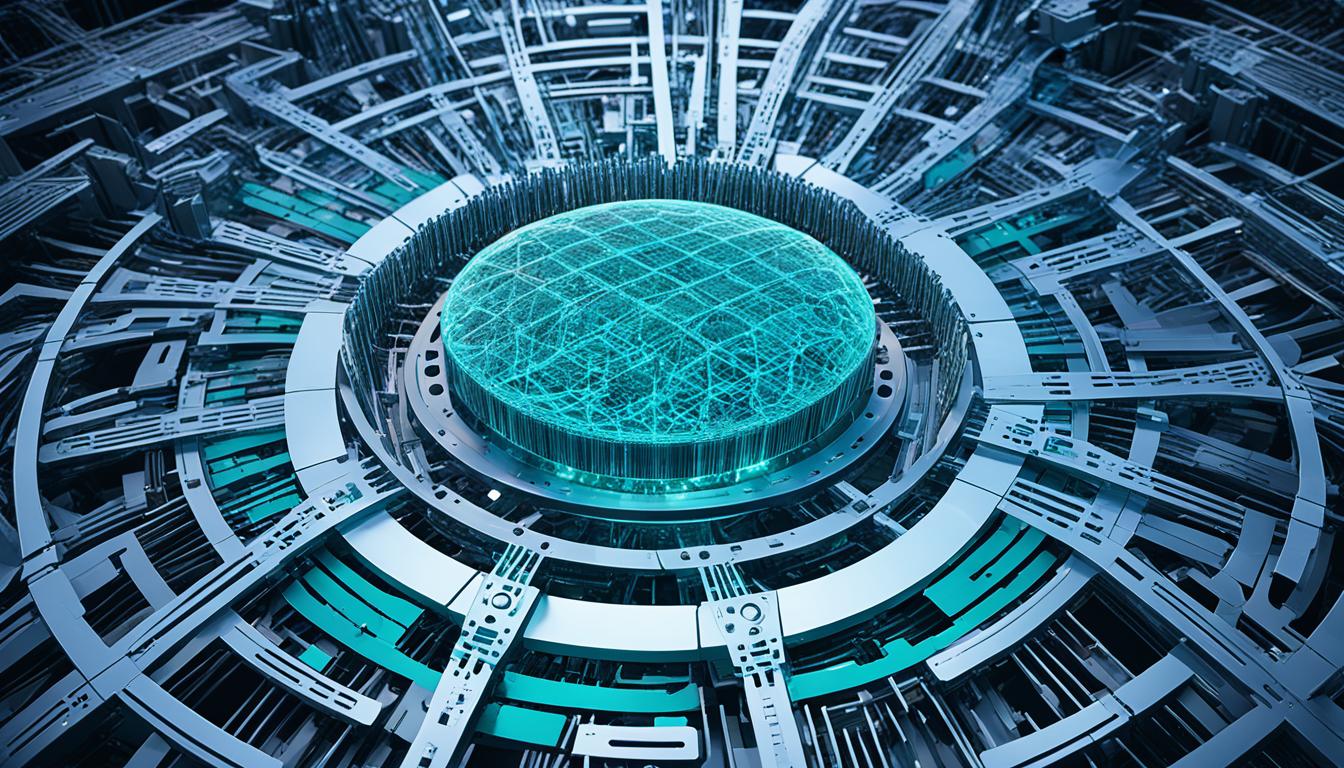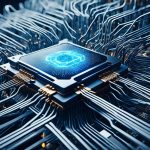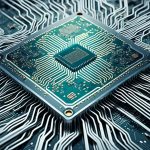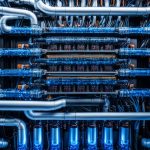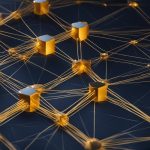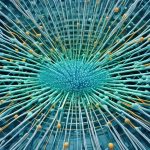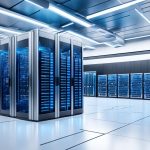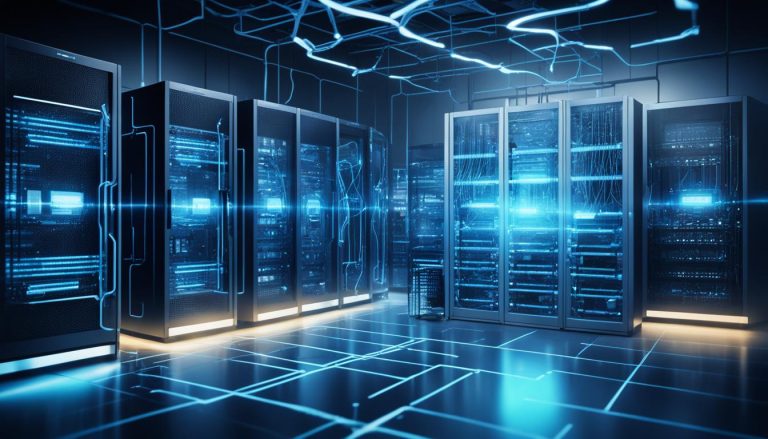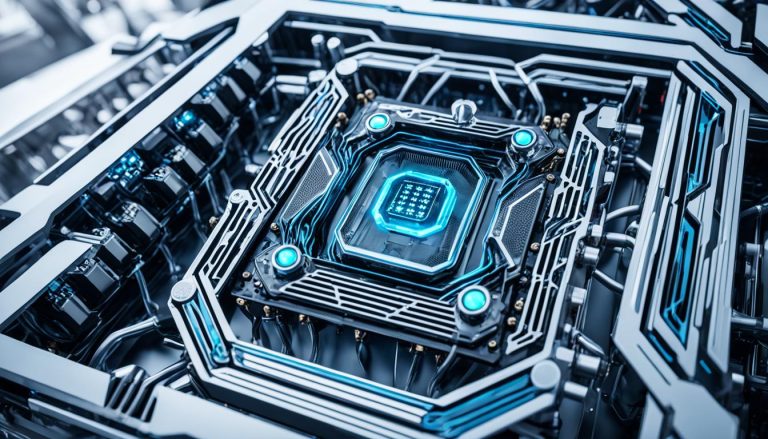Deep learning has become the most common implementation of neural networks for AI tasks. Enterprises are looking for ways to run deep learning frameworks in their own data centers to avoid the costs and challenges of cloud-based AI. Choosing an enterprise server for deep learning training involves considering specific computational requirements, such as the use of GPUs for matrix multiplications and the need for high-performance CPUs. The size of the model and the ratio of system memory to GPU memory are also important factors. Deep learning training can benefit from multiple GPUs and multi-node training, which require high-bandwidth network adapters. DL training data typically resides on external storage arrays, and optimizing PCIe communication paths is crucial for performance. NVIDIA has published guidelines and offers NVIDIA-Certified Systems for deep learning training.
Key Takeaways:
- Deep learning involves the implementation of neural networks for AI tasks.
- Enterprises prefer running deep learning frameworks in their own data centers to mitigate costs and challenges.
- Choosing the right server architecture entails considering computational requirements such as GPUs and high-performance CPUs.
- Multiple GPUs and high-bandwidth network adapters enhance deep learning training.
- Optimizing PCIe communication paths is crucial for performance.
- NVIDIA provides guidelines and certified systems for deep learning training.
Understanding Deep Learning for AI Tasks
Deep learning, powered by neural networks, is a fundamental technique for AI tasks. To harness the power of deep learning, software frameworks like TensorFlow and PyTorch are commonly used. Understanding the data processing pipeline involved in deep learning training is essential for successful implementation, including data preparation and preprocessing.
Using GPUs for acceleration is a crucial element of deep learning. GPUs are specifically designed for matrix multiplication, which allows for fast training speeds. However, the CPU also plays a significant role in data preparation and preprocessing. A high-performance CPU is necessary to sustain these operations and avoid bottlenecks.
Ensuring a consistent data flow to the GPU requires optimizing the ratio of system memory to GPU memory. This ensures smooth processing without data delays. Additionally, deep learning training can benefit from using multiple GPUs and multi-node training with high-bandwidth network adapters, enabling parallel processing and faster model convergence.
By understanding the foundations of deep learning, including neural networks and the software frameworks utilized, developers and data scientists can effectively implement deep learning techniques for various AI tasks. The combination of GPUs, high-performance CPUs, proper memory allocation, and network optimization enables efficient training, improving the overall performance of deep learning models.
Choosing the Right Deep Learning Model
The field of deep learning offers a range of models that can be tailored to address specific AI tasks. Whether you are working on image processing, sequence analysis, natural language processing, or data generation, choosing the right deep learning model is crucial for achieving accurate results. Let’s explore some popular models and their applications:
CNN (Convolutional Neural Network)
CNNs are widely used for image processing tasks such as object recognition and computer vision. These models have proven effective in analyzing visual data, thanks to their ability to automatically learn meaningful features from images. CNNs consist of convolutional layers that extract local patterns and hierarchical features, making them ideal for tasks that require understanding and interpreting images.
RNN (Recurrent Neural Network)
RNNs are well-suited for handling sequential data, making them a valuable choice for tasks like speech recognition, language modeling, and sentiment analysis. Unlike traditional models, RNNs have a memory component that allows them to process data with temporal dependencies. This memory enables RNNs to capture long-term dependencies and learn from previous information, making them powerful for tasks involving sequential patterns.
Transformers
Transformers have revolutionized natural language processing (NLP) tasks, particularly in areas like machine translation and text generation. Transformers use an attention mechanism that allows them to focus on relevant parts of the input sequence, resulting in better context understanding and more accurate language modeling. Their ability to learn contextually-rich representations has significantly improved the performance of NLP models.
GANs (Generative Adversarial Networks)
GANs are unique deep learning models that are used for data generation. They consist of two neural networks – a generator and a discriminator – that are trained together in a competitive manner. The generator creates synthetic data samples, while the discriminator tries to distinguish between real and synthetic data. GANs have found applications in generating realistic images, creating synthetic voice samples, and even generating new music.
When selecting a deep learning model, it’s important to consider the characteristics of your data and the specific requirements of your AI task. Starting with a simple model and gradually increasing complexity can help you find the optimal solution. Experimenting with different architectures, activation functions, and regularization techniques will contribute to finding the model that best suits your needs.
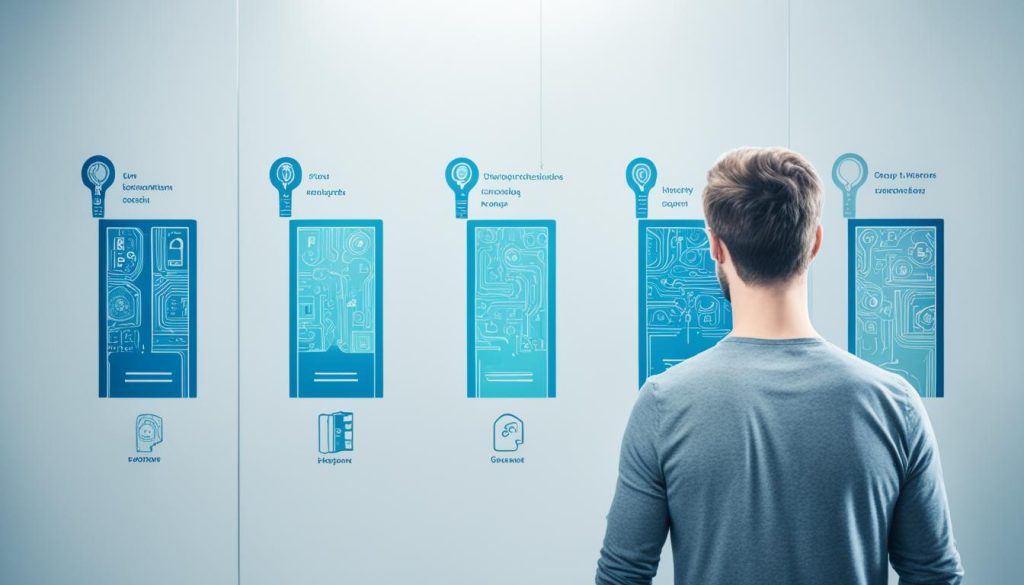
Customizing Your Deep Learning Model
Once you have chosen a suitable deep learning model, it is time to customize it to address your specific problem. Customization involves adjusting hyperparameters, making architecture modifications, and evaluating the impact of these changes on training and validation metrics.
Hyperparameters
Hyperparameters are parameters that are not learned from the data but need to be set before training. They control the behavior of the model during training and can significantly affect its performance. Some important hyperparameters to consider include:
- The number and size of layers: The depth and width of a neural network can impact its learning capacity and generalization.
- Activation functions: Choosing the appropriate activation function for each layer can affect how well the model learns and generalizes.
- Learning rate: This determines the step size for weight updates during training and can affect the speed and quality of convergence.
- Regularization methods: Techniques like dropout and weight decay can prevent overfitting and improve model generalization.
- Optimization algorithms: Different optimization algorithms, such as gradient descent or Adam, can impact the speed and quality of convergence.
Experimenting with different combinations of hyperparameters can help you find the optimal settings for your deep learning model.
Architecture Modifications
Besides adjusting hyperparameters, making modifications to the model’s architecture can also improve its performance. Some architecture modifications worth exploring include:
- Adding more layers: Increasing the depth of the network can allow it to learn more complex representations.
- Changing layer sizes: Adjusting the number of neurons in each layer can impact the model’s capacity to capture different patterns and features.
- Introducing skip connections: These connections can help mitigate the vanishing gradient problem and improve gradients flow.
By experimenting with different architecture modifications, you can fine-tune the model to better fit your specific problem.
Evaluating Training and Validation Metrics
After making changes to your deep learning model, it is crucial to evaluate their impact on training and validation metrics. The most common metrics used for evaluation include loss and accuracy. The loss measures how well the model predicts the target variable, while accuracy assesses the model’s overall correctness.
“Fine-tuning a deep learning model involves adjusting hyperparameters, making architecture modifications, and carefully evaluating the impact of these changes on training and validation metrics.”
Validating Your Deep Learning Model
In order to ensure the effectiveness and reliability of your deep learning model, validation is a critical step in the process. This involves using a separate test set to measure the model’s generalization ability and to check for any signs of overfitting or underfitting.
The test set should be independent from the training and validation sets, providing an unbiased evaluation of the model’s performance. This ensures that the model can effectively generalize to new, unseen data.
During the validation process, it is important to assess the model using appropriate evaluation metrics. The choice of evaluation metrics depends on the nature of the problem being solved. For regression tasks, mean squared error can be used to measure the average squared difference between the true and predicted values. In classification tasks, accuracy or confusion matrix can be used to determine how well the model classifies different classes. Furthermore, for machine translation tasks, the BLEU score can be used to evaluate the quality of the translated text.
Analyzing the errors and successes of the model’s predictions can provide valuable insights for further improvements. By understanding the patterns and areas where the model is struggling, adjustments can be made to enhance its performance.
Evaluation Metrics for Deep Learning Models
- Mean Squared Error (MSE): Used for regression tasks to measure the average squared difference between the predicted and true values.
- Accuracy: Measures the percentage of correctly classified instances in classification tasks.
- Confusion Matrix: Provides a detailed understanding of the model’s performance by showing the number of true positives, true negatives, false positives, and false negatives.
- BLEU Score: A metric commonly used in machine translation tasks to evaluate the quality of the translated text by comparing it to a reference translation.
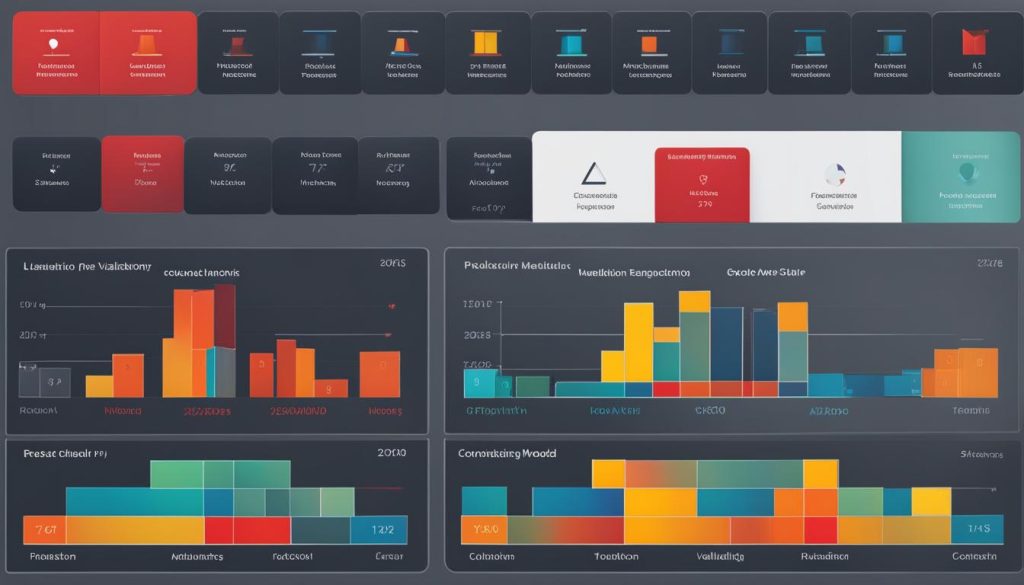
The table below showcases the evaluation metrics commonly used for different types of deep learning tasks:
| Task | Evaluation Metric |
|---|---|
| Regression | Mean Squared Error (MSE) |
| Classification | Accuracy, Confusion Matrix |
| Machine Translation | BLEU Score |
By utilizing the test set and evaluating the model using appropriate metrics, you can gain valuable insights into its performance and make informed decisions for further optimization and refinement.
Deploying Your Deep Learning Model
Deploying your deep learning model requires careful consideration of various factors, including hardware and software requirements, security and privacy concerns, reliability and robustness, as well as maintenance and updates. It is crucial to ensure that the model functions effectively in a production environment, meeting the needs of real users or applications while adhering to high standards of performance and stability.
Production Environment
A production environment is the environment where the deep learning model will be deployed and utilized to serve its intended purpose. It is essential to understand the specific requirements of this environment and ensure that the model operates seamlessly within it. Factors such as hardware availability, network infrastructure, and system scalability should be taken into account to guarantee optimal performance and reliability.
Hardware Requirements
Choosing the right hardware for deploying your deep learning model is crucial to its successful operation. The hardware should be capable enough to handle the computational demands of the model, including processing power, memory, and storage requirements. High-performance CPUs and GPUs, along with sufficient memory and storage capacities, are often necessary for efficient model deployment.
Software Requirements
The software requirements for deploying a deep learning model involve selecting the right frameworks and libraries that align with the model’s architecture and implementation. Popular deep learning frameworks such as TensorFlow and PyTorch offer robust capabilities for model deployment. Moreover, it is important to consider the supporting software and dependencies necessary to run the model effectively.
Security
Ensuring the security of your deep learning model is paramount, especially when dealing with sensitive data or critical applications. Implementing appropriate security measures, such as data encryption, secure access controls, and vulnerability assessments, helps safeguard the model and the data it processes. It is crucial to develop and enforce robust security protocols to mitigate potential risks and protect against unauthorized access or data breaches.
Reliability
Deploying a reliable deep learning model involves verifying its performance, stability, and resilience in real-world scenarios. Systematic testing and validation procedures should be conducted to confirm the model’s ability to handle different inputs, identify edge cases, and deliver consistent results. Monitoring mechanisms should also be put in place to detect any deviations or anomalies, ensuring that the model maintains its reliability over time.
By carefully considering the production environment, hardware and software requirements, security measures, and reliability factors, you can confidently deploy your deep learning model and leverage its capabilities to drive meaningful impact and success in your AI initiatives.
Regularization and Optimization Techniques
Regularization and optimization techniques play a crucial role in improving the training and testing performance of your deep learning model. These techniques help address common challenges like overfitting and underfitting, ensuring that your model achieves optimal results in real-world scenarios.
One important aspect of regularization is to add constraints or penalties to the network to prevent overfitting. Two commonly used techniques are dropout and weight decay. Dropout randomly sets a fraction of the input units to 0 during training, forcing the network to learn redundancies and reducing its reliance on specific features. Weight decay imposes a penalty on the magnitude of the weights, encouraging the model to learn simpler representations and reducing the risk of overfitting.
Optimization, on the other hand, focuses on finding the optimal values of the model’s parameters to minimize the loss function. One popular optimization algorithm is gradient descent, which iteratively adjusts the weights based on the gradients of the loss function with respect to the parameters. Another widely used optimization algorithm is Adam, which combines the advantages of adaptive learning rates and momentum methods to converge faster and more efficiently.
By incorporating regularization and optimization techniques into your deep learning model, you can enhance its generalization ability and robustness. These techniques prevent the model from memorizing the training data (overfitting) or failing to capture important patterns (underfitting), ensuring that it performs well on unseen data.
Now, let’s take a look at a table that summarizes the key regularization and optimization techniques:
| Technique | Description |
|---|---|
| Dropout | Randomly sets a fraction of input units to 0 during training to reduce overfitting. |
| Weight Decay | Adds a penalty to the magnitude of the weights to encourage simpler representations and prevent overfitting. |
| Gradient Descent | Adjusts the weights based on the gradients of the loss function to minimize the error. |
| Adam | Combines adaptive learning rates and momentum methods to converge faster and more efficiently. |
As you can see, regularization and optimization techniques are powerful tools for fine-tuning your deep learning model and achieving optimal performance. Experimenting with different combinations of these techniques and understanding their impact on your model’s performance will help you create more robust and effective AI solutions.
Conclusion
In conclusion, choosing the right deep learning architecture is a crucial step in solving your machine learning problem effectively. By understanding the data, selecting suitable models, and customizing the model to your specific needs, you can create a solid foundation for success. Validating the model’s performance and deploying it in a production environment are essential to ensure its practicality and reliability.
Applying regularization and optimization techniques further enhances the model’s performance and robustness, guarding against overfitting and underfitting. Experimentation and continuous improvement play a vital role in refining the deep learning architecture, allowing you to constantly evolve and adapt to the requirements of your machine learning problem.
By following these steps and considering the specific requirements of your machine learning problem, you can build an effective and efficient deep learning solution. Deep learning architecture empowers you to harness the full potential of your data and unlock insights that drive meaningful change.
FAQ
What are the important considerations for choosing an enterprise server for deep learning training?
The important considerations for choosing an enterprise server for deep learning training include specific computational requirements such as the use of GPUs, high-performance CPUs, and optimizing PCIe communication paths.
What are the software frameworks used for implementing deep learning?
Deep learning is implemented using software frameworks like TensorFlow and PyTorch.
How do I choose the right deep learning model for my problem?
The choice of deep learning model depends on the type of problem you are trying to solve. Common models include CNNs for image processing, RNNs for sequences, transformers for NLP, and GANs for data generation. The size and complexity of your data also influence the choice of model.
Can I customize my deep learning model?
Yes, you can customize your deep learning model by adjusting hyperparameters such as the number and size of layers, activation functions, learning rate, regularization methods, and optimization algorithms.
How do I validate the performance of my deep learning model?
You can validate the performance of your deep learning model by using a separate test set to measure its generalization ability and evaluating metrics like mean squared error, accuracy or confusion matrix, and BLEU score.
What considerations are involved in deploying a deep learning model?
Deployment of a deep learning model involves considerations such as hardware and software requirements, security and privacy issues, reliability and robustness, and maintenance and updates.
How do regularization and optimization techniques improve deep learning?
Regularization techniques help reduce overfitting, while optimization techniques find the optimal values of parameters to minimize the loss function, ensuring robust performance of the deep learning model.
What is the key in choosing the right deep learning architecture?
The key in choosing the right deep learning architecture is understanding the data, selecting suitable models, customizing the model, validating its performance, deploying it in a production environment, and applying regularization and optimization techniques.

